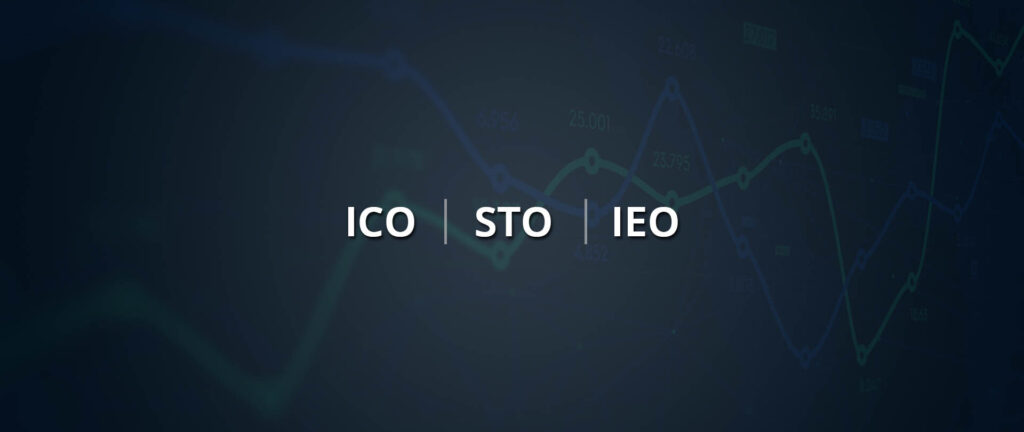Since the introduction of NFTs, corporations, celebrities, and artists have been able to sell their products directly, avoiding intermediaries. Trading Non-fungible tokens, on the other hand, have some interesting features over the traditional trading system. When trading NFTs, it is simple to establish ownership and provenance. An NFT marketplace that can function for virtual exchange, asset tokenization, and storage are required by default to trade NFT. NFT marketplaces are based on blockchain platforms such as Ethereum, Cardano, R3Corda, and others. This article will discuss the Ethereum NFT marketplace and how to build an NFT marketplace on it.
- What is an Ethereum NFT?
- What makes Ethereum NFT marketplace worthy?
- How to build an Ethereum NFT marketplace?
- Marketplace functionalities for users
- Marketplace functionalities for admins
- Security features for Ethereum NFT marketplace
- Tech-stacks for Ethereum NFT marketplace
- Popular features in an Ethereum NFT marketplace
- Future of NFTs on Ethereum
What is an Ethereum NFT?
Ethereum NFT marketplace is an example of a decentralized marketplace for buying, selling, and exchanging non-fungible tokens. Before discussing further, let’s first brush up on what exactly are NFTs and Ethereum.
NFTs are digital assets or tokens representing ownership of unique collectibles like art, music, or even real estate. NFTs became popular when digital collectibles stirred demand. Any collectibles that can now be converted into an NFT can be traded on platforms such as Open sea and Binance.
Ethereum is a decentralized platform powered by Ethereum blockchain technology. Ethereum enables immutable smart contracts built on its blockchain and run without third-party interference.
What makes Ethereum NFT marketplace worthy?
Ethereum provides many advantages that make it a powerful platform for NFT marketplaces. Ethereum supports the most popular NFT marketplaces, including Opensea, Rarible, and Larva Lab.
The advantages of developing an NFT marketplace on Ethereum are:
Private transactions: Ethereum enables the formation of private consortiums with encrypted transaction layers. Private information in such consortia is encrypted and is never broadcast to network participants. This allows for better management of the NFT marketplace.
Coordination of data: The decentralized design delivers trust. It removes the user’s reliance on a centralized authority to operate the system and carry out transactions. As a result, the Ethereum marketplace can operate more efficiently and quickly.
Scalability: Ethereum is a clear example with multiple nodes and millions of users, unlike other blockchain networks with limited room for future growth. Ethereum will be a great option that can provide the best scaling solutions for your NFT marketplace endeavors.
Quick deployment: It enables faster deployment of dapps, which means they can immediately install and manage Ethereum transactions such as exchange, mining, and storage. As a result, the marketplace will quickly become global.
Compatibility: Ethereum finds transactions three times faster than and doesn’t need manual verification. It is compatible with various devices due to its optimization. It can incorporate all the main wallets, including centralized and Defi.
How to build an Ethereum NFT marketplace?
Following are some steps to get familiar with the steps that you can build a successful NFT marketplace:
Seek the best blockchain developers: Ethereum is a frontrunner in the blockchain network. It ensures trust, reliability, and stability. Apart from Ethereum’s security, protocol developers perpetually consider the types of apps and tools to make a highly relevant User Interface and User Experience (UI/UX). Before choosing the blockchain, you should get help from a reputable blockchain service provider.
User interface development: The most crucial component of developing an NFT marketplace is designing a user interface (UI) that allows real-time involvement. A search bar, a list of categories, filters, a community space, an admin panel, and a dashboard are all required user interface features. For many NFTs, the categories list and filter in the search bar improve the user experience and reduce search time.
Compatible wallets: While developing an NFT marketplace, you must create a MetaMask for the Ethereum wallet. Crypto wallets must be cross-chain compatible. These wallets keep cryptocurrencies for secure transactions.
Protocol development for smart contracts: Your platform’s logic is found at the back end. Most data flows and is validated using smart contracts on a blockchain because the NFT marketplace is a decentralized system. This step in constructing a smart contract protocol is distinct from other processes in creating a custom NFT marketplace. The NFT marketplace’s trading capability is implemented using a group of smart contracts on Ethereum.
Front-end programming: Front-end development refers to the creation of a website. After picking the proper framework for your project, software engineers incorporate all critical client-side functionality. The main goal is to ensure that the platform functions swiftly, efficiently, and consistently.
Testing: Early detection and resolution of issues ensure that your product is ready for release. Furthermore, software testing guarantees that your platform works as intended and meets the project’s original goals. Remember that a well-tested software solution will provide dependability, security, and high performance.
Getting support: Once you’ve validated that your platform is bug-free, it’s time to launch your NFT marketplace. Many people feel this is the final stage, but the software must be regularly maintained and updated.
Marketplace functionalities for users
The marketplace must be designed keeping in mind the requirements and convenience of customers, who will be the primary stakeholders of the platform. Let’s look at some important functionalities you can add for the users.
Sign up and log in system: The platform’s customers should have easy options to sign-up and register to create an account. Multiple options, such as linking social media accounts or emails, can be quite convenient for revealing the users’ identities. After the initial sign-up, the user must be able to log in as often as they want with similarly convenient log-in options.
Purchase Ethereum NFT: A dynamic search bar to filter out the assets according to the customized intentions of customers is not only time-saving but also aids their decision-making. In addition, an analytics system that provides all the details of the assets along with the comparison is an analytics system that helps price comparison and provides market updates is always appreciated by users. Other basic interface features include a cart and expanded view.
Auction: NFT marketplaces have the option to auction off assets. There are several bid options that the seller can set to pick the right buyer. An NFT marketplace can offer auction options with bid rate, duration, and more. A separate page with bid history, the highest bidder, and more such information can also be added.
Customer support: Many users might have various issues while using the NFT marketplace. This is why we must provide a support system at all times. It can also increase the credibility and trustworthiness of the platform. You can add varied chatbot support options, such as “chat with a support agent.”
Marketplace functionalities for admins
A holistic NFT marketplace can only function optimally when the admins have enough features to manage the platform. Some of them include
Managing users: The admins of the Ethereum NFT platform must have access to view all the registered user profiles, their transaction history, and the assets listed on the platform. They must have the authority to delete or report a profile too.
Managing assets: For managing assets, the admins portal must be enabled to view the details associated with every user-listed asset on the platform. Admins should also be able to add or remove them after checking for authenticity. Other functions include editing the time frame listing for auction, listing privately for selected users, and adding details of owners of the NFT. An analytics panel is also essential for admins.
Security features for Ethereum NFT marketplace
One important security feature to add is confidentiality. This will prevent unauthorized third parties from accessing information from the platform. The data must be accurate and reliable to maintain the integrity of the marketplace.
Some more security features can include:
Disruption guarding: Components such as the Maximum Tolerable Downtown (MTD) measure and Recovery Time Objective (RTO) can be added to Service Level Agreement (SLA).
Detective features: Detective security systems help to identify unauthorized changes performed by a user or an unauthorized person.
Authentication: Successful user/process Authentication, Session Identified (ID) tracks the authenticated state of the platform. To avoid Sensitive Data leakage, measures like Initialization and Disposal of Global Variables, Hashing/Encryption of Sensitive data, etc., should be clearly defined.
Tech-stacks for Ethereum NFT marketplace
Solidity: Solidity is a curly-braces and statically-typed programming language. It was created for use with Ethereum Virtual Machine to build smart contracts. Solidity can be used to develop tokens of value, DAO voting, ownership, and other logic.
Web3.js: Web3.js is an essential JavaScript language used to build connections on the Ethereum blockchain. Using the HTTP, IPC, or WebSocket, you can communicate with an Ethereum node.
Truffle: Truffle helps test and deploy smart contracts on Ethereum. Through Truffle, automated contract verification can be done. The stack also supports custom build procedures. Scriptable deployments and migrations are also provisioned. A single system manages all public and private networks. Assets can be recreated immediately while a project is in development. Several such features make Truffle a preferable choice.
Ganache: Developers can rapidly build applications on Ethereum and Corda using personal blockchains like Ganache. Testing, deploying, and developing dApps in a deterministic manner can be performed by Ganache. Ganache offers two interfaces, graphical and command-line.
IPFS: Using the IPFS node, you can store files of your own or others for free. It is a system for accessing and storing data in InterPlanetary File System. IPFS does not have an incentive program but can be used with one or more contracts to ensure long-term success.
Node. js: Node.js is an open-source, cross-platform JavaScript runtime environment. The V8 JavaScript engine, the base of Google Chrome outside the browser, is run by Node. js. You need not start a new thread for every request. Node. js functions in a single process. Node. js follows non-bocking paradigms, which makes the blocking behavior an exception.
Popular features in an Ethereum NFT marketplace
These are some of the necessary features people look for in a marketplace.
A detailed shopfront: A shopfront serves as a dashboard for an NFT marketplace. Useful and important information regarding an asset, such as ownership, title, price description, payment methods supported, archives, and more, will be displayed on the storefront.
Advanced search feature: Customers need a search bar to get exactly what they need with the few keywords they input. Thus, it is necessary to organize all the products in a marketplace based on popular customer search behavior. Even more brownie points if the search is completed quickly.
Filters: A filtering and sorting option makes navigating the products simple, easy, and straightforward. Some input features inside a filter include payment method, due date, and listing status.
Trading: People must be able to buy and sell NFTs on the marketplace. The proposals should include various bid options with dates and details, such as the status of each bid proposal.
NFT wallet: Users require a wallet to store the NFTs they buy. Integrating a good crypto wallet is a wise solution. Some wallet considerations are Metamask, MyEtherWallete, Coinbase, and WalletConnect.
Future of NFTs on Ethereum
Ethereum is one of the most famous platforms for NFT marketplace development. The network has several benefits and functionalities that make it suitable for an online marketplace. Businesses and users can benefit from creating a marketplace on this blockchain and earn consistent revenue.
Moreover, NFT marketplaces are one of the very concepts in NFTs as they could play a vital role in the mass adoption of NFTs. With the blockchains like Ethereum moving to cost-effective, scalable solutions, and with the introduction of Ethereum 2.0, the trading experience will outperform a user’s needs.
Consider Ethereum for NFT marketplace development if you want the right blockchain network. It can offer many advantages to users and assists your businesses in reaching new heights in the digital sphere.


